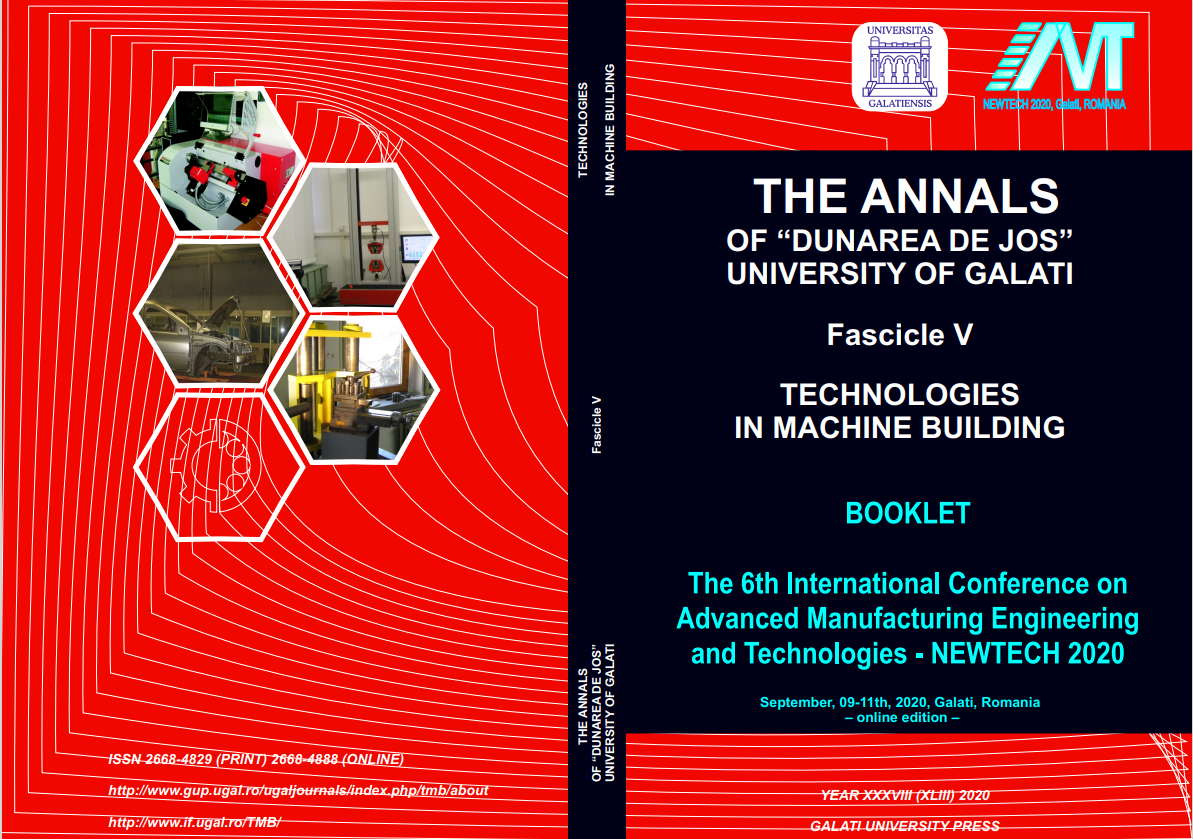Influence of some process input factors on the main dimensions of the grooves generated during the ball vibroburnishing
Abstract
The ball vibroburnishing is a processing method based on the plastic deformation of the workpiece surface layer, as a result of a vibration movement achieved by the ball pressed with a known force on the workpiece surface. The surface obtained by ball vibroburnishing includes grooves with different directions and partially overlapped. To know better the influence exerted by the ball vibroburnishing conditions on the main dimensional characteristics of the grooves, an experimental research was designed and materialized. As the process input factors, the diameter of the ball, the force, and the workpiece rotation speed were used. The depth and width of the groves generated by the moving balls on the workpiece surface layer were measured. By mathematical processing of the experimental results, empirical mathematical models were determined. These models highlight the intensity of the influence exerted by the ball vibroburnishing process input factors on the main dimensions of the grooves.


